Old Traditions, New Mongolia
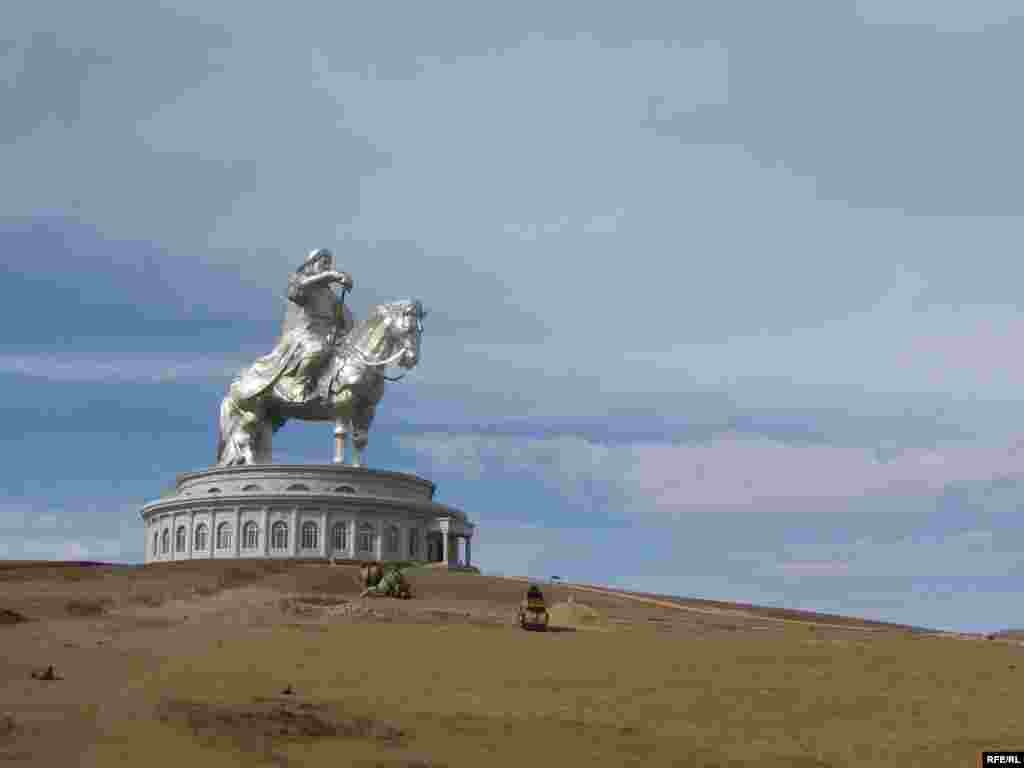
1
The Chinggis (Genghis) Khan statue in Tsonjin Boldog, an hour's drive east of Ulan Bator. - The statue -- 50 meters high, including its base, and plated in 250 tons of stainless steel -- is the world's largest equestrian statue. It is built on the site where the legendary 13th-century khan is believed to have found the golden whip that inspired his future conquests.

2
He's depicted holding the whip in his right hand.

3
The statue is part of Mongolia's efforts to promote the legendary conquerer after years of communist-era repression.

4
Such efforts are not always on a grand scale. - Various brands of Chinggis Khan vodka are on sale around the country. It's a popular souvenir at duty-free when leaving the country.
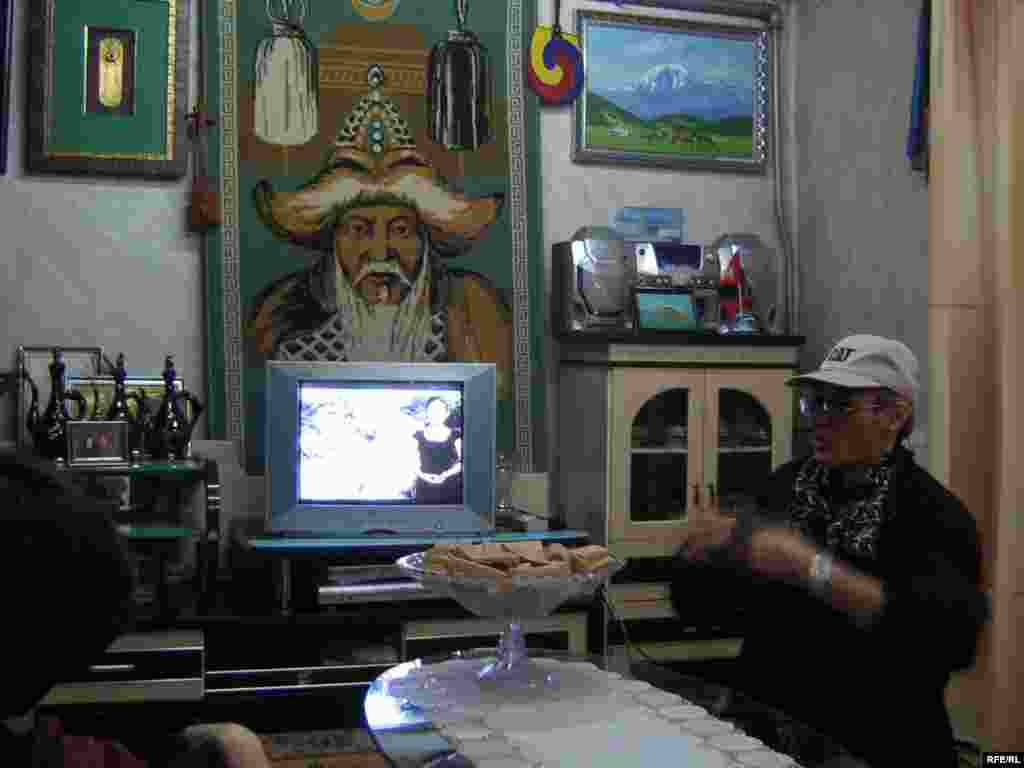
5
An image of Chinggis Khan adorns the wall of a private home in the village of Zuunkharaa. - Many Mongolian living rooms feature a must-have trinity of Chinggis Khan, a Buddhist shrine, and the obligatory bowl of aruul, or dried cheese curds.

6
A herd of horses grazing outside the village of Tsonjin Boldog. - Native Mongolian horses are prized for their strong, short legs and long manes and tails. The image of the horse is highly respected and central to Mongolian culture. The vast majority of Mongolia's horses are allowed to roam free, either wild or as the property of nomadic herders. Such a lifestyle makes them vulnerable to theft.
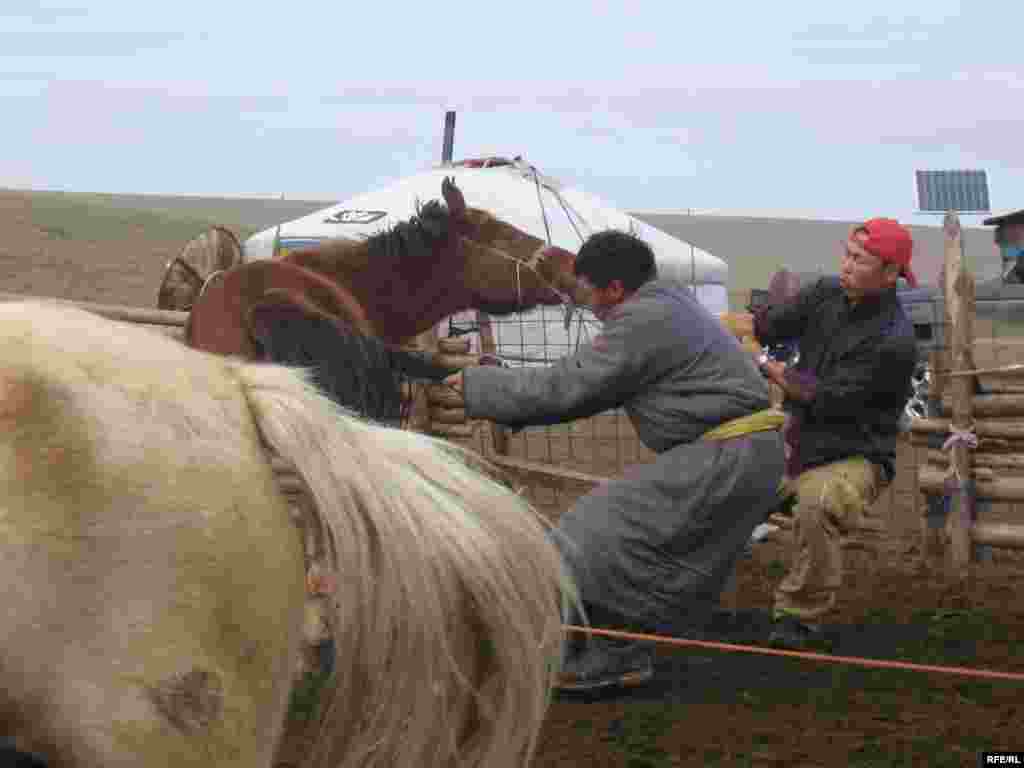
7
Men in Tsagaan Nuur try to rope one of the family's horses in preparation for branding. - The family scheduled the branding to coincide with an auspicious day on the Buddhist calendar, which can dictate the planning of everything from haircuts to weddings in Mongolia.
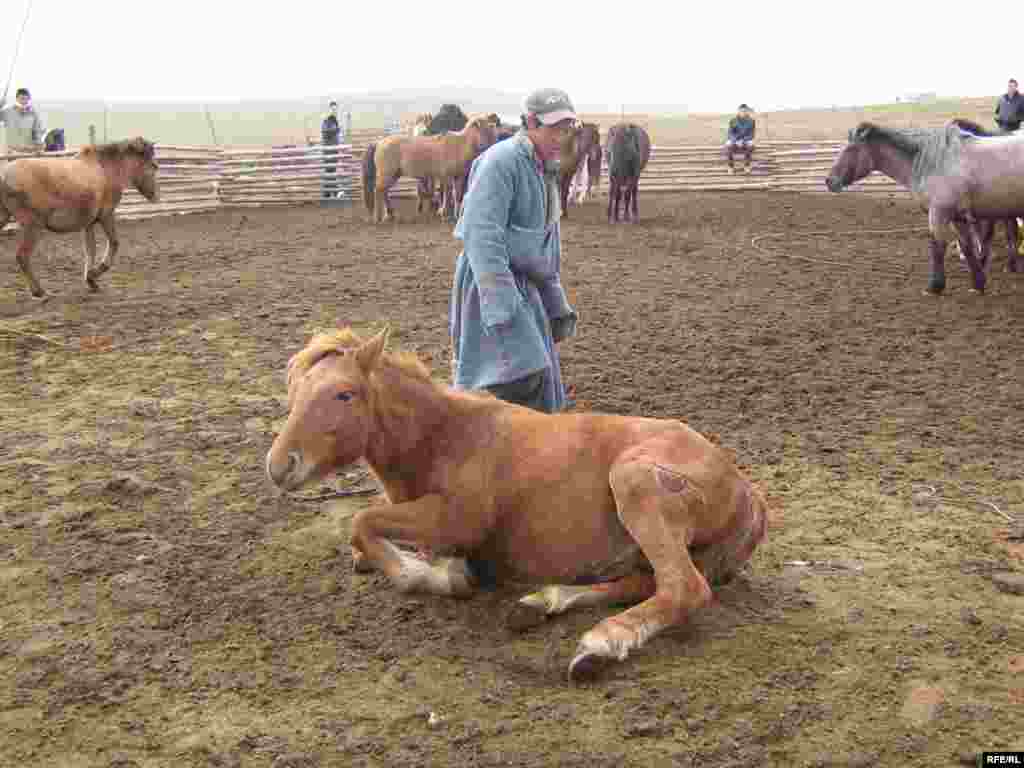
8
A man in Tsagaan Nuur branding one of his family's horses. - Horses are the undisputed king of the "snouts," as the country's grazing livestock -- sheep, goats, camels, cows, and yaks -- are collectively known.
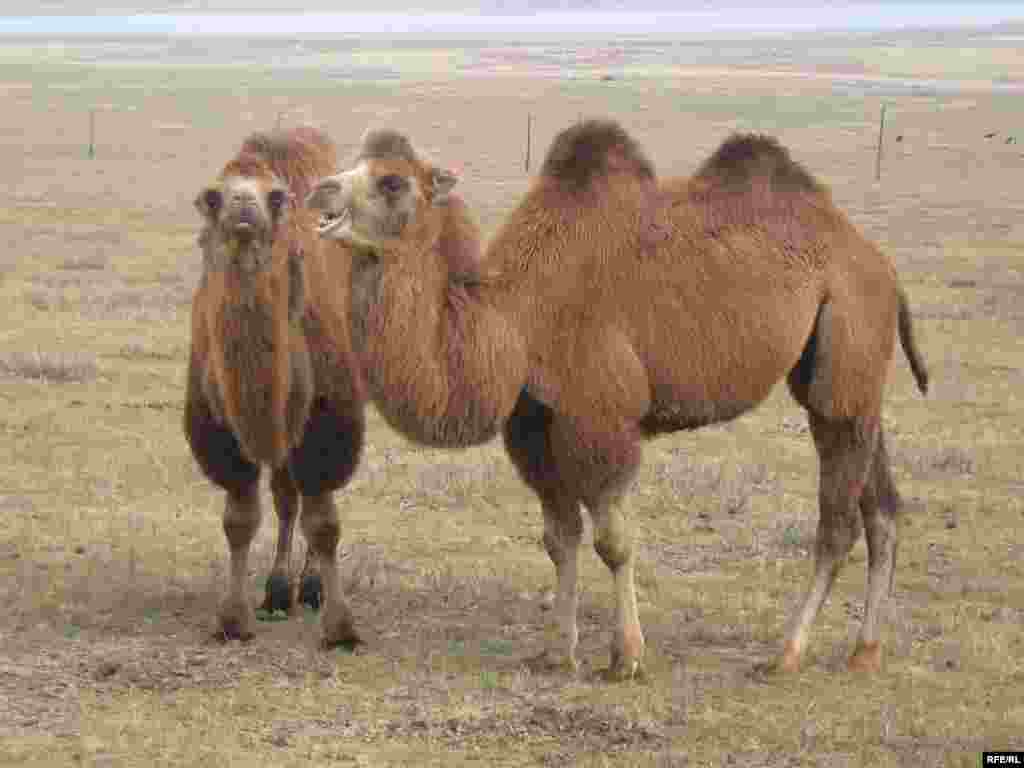
9
Two camels grazing in Tsagaan Nuur - Camels are highly prized for their milk, which, when fermented, is believed to have strong therapeutic properties. These camels traveled from the Gobi Desert when their nomadic owners migrated north in search of a better market for their fermented camel milk.

10
A newly built, 23-meter-high Golden Buddha gleams in a park on the southern tip of Ulan Bator. - Mongolia has sought to resurrect its Buddhist heritage following years of communist repression.

11
The Gandan Khiid Monastery in Ulan Bator - The monastery was one of the few in Mongolia that was spared complete destruction under the communist regime, although its central Buddhist deity statue was dismantled and shipped to Moscow. The statue was rebuilt in 1996.
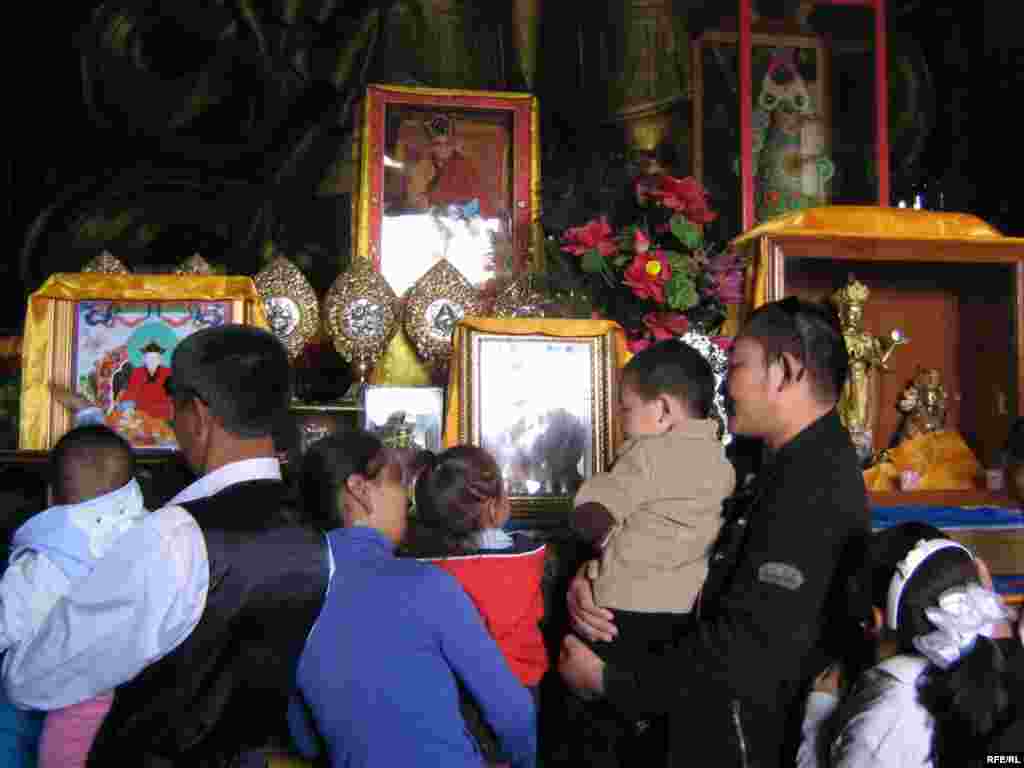
12
The monastery today is a popular attraction for tourists and Buddhists. - Buddhism has seen a popular resurgence in Mongolia since the end of the communist regime in 1990.

13
Newlyweds pose outside the monastery. - Mongolians often plan their personal lives around auspicious dates on the Buddhist calendar, and brides and grooms often include a monastery in the sites they visit for photographs after the wedding ceremony.
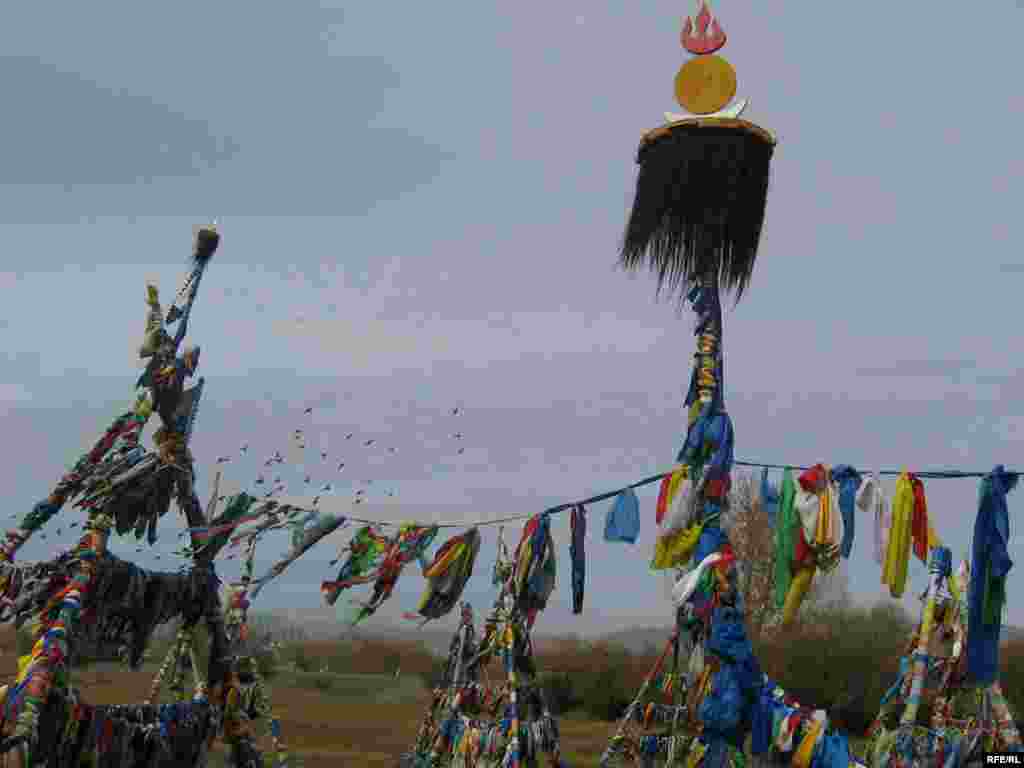
14
A roadside shaman shrine south of the Mongolian capital. - Even more than Buddhism, shamanism is the guiding spiritual tradition among traditional nomadic tribes in Mongolia, Central Asia, and Siberia. Mongolian drivers will typically beep their horn when passing a shrine.
(Photographs by Daisy Sindelar)